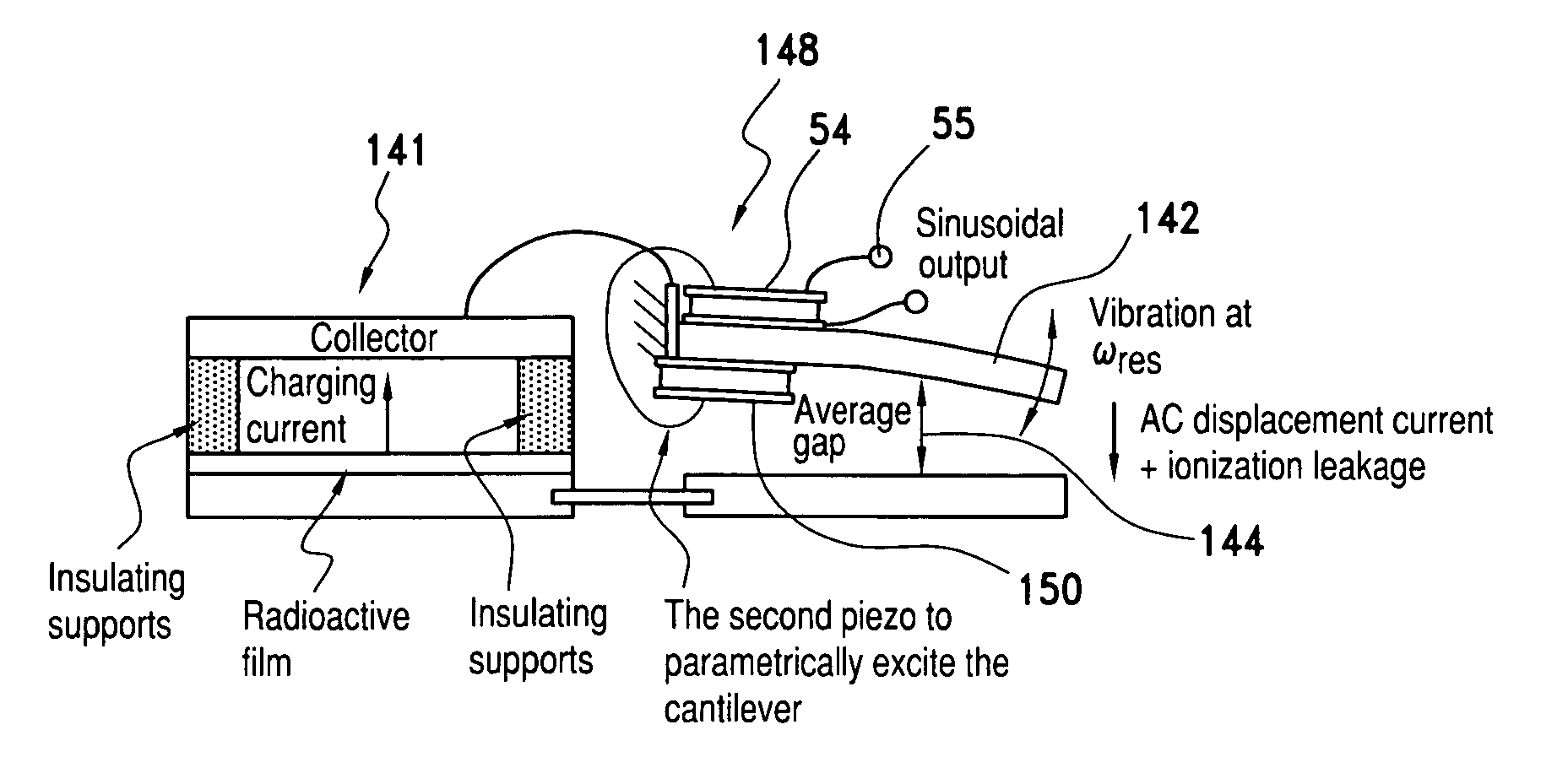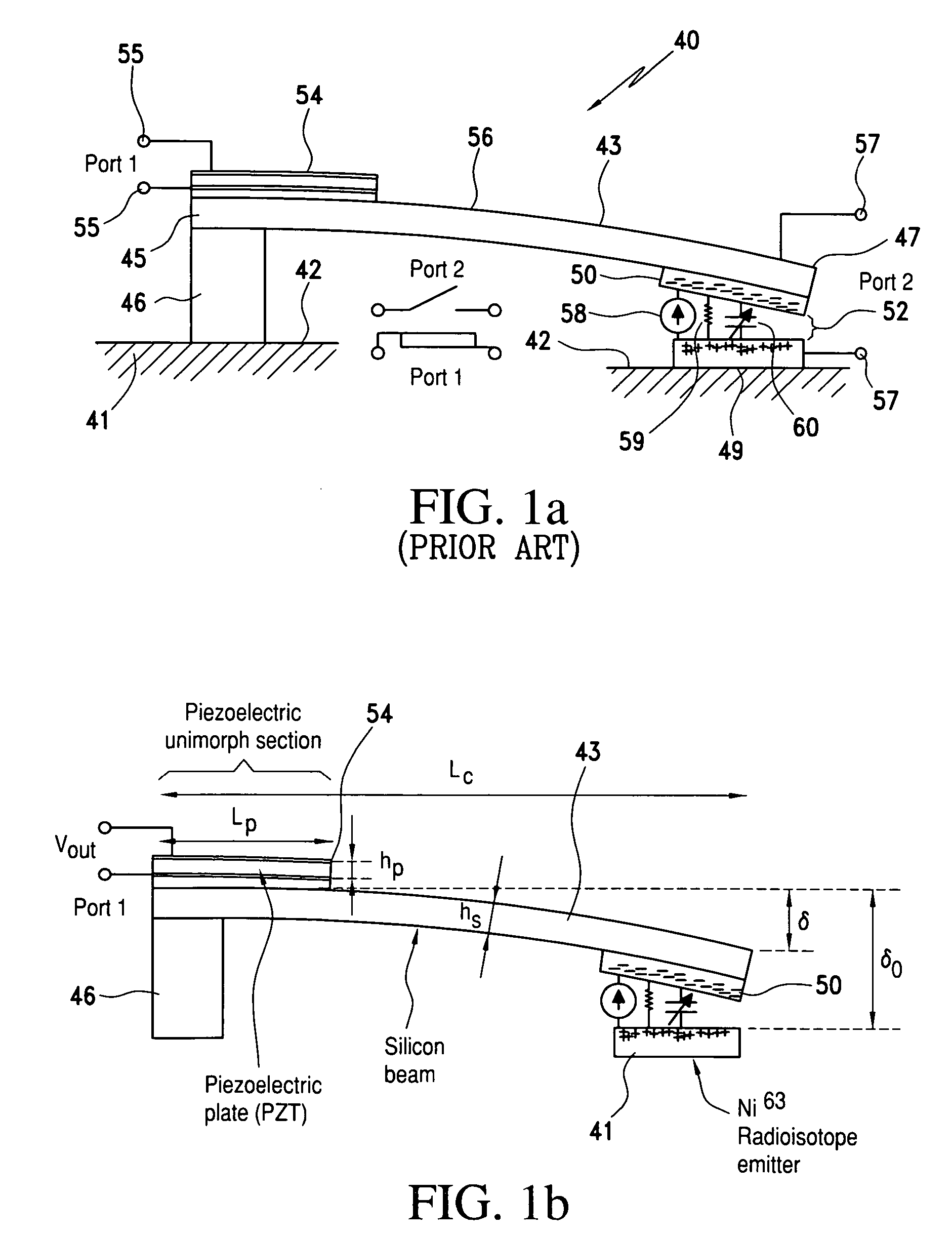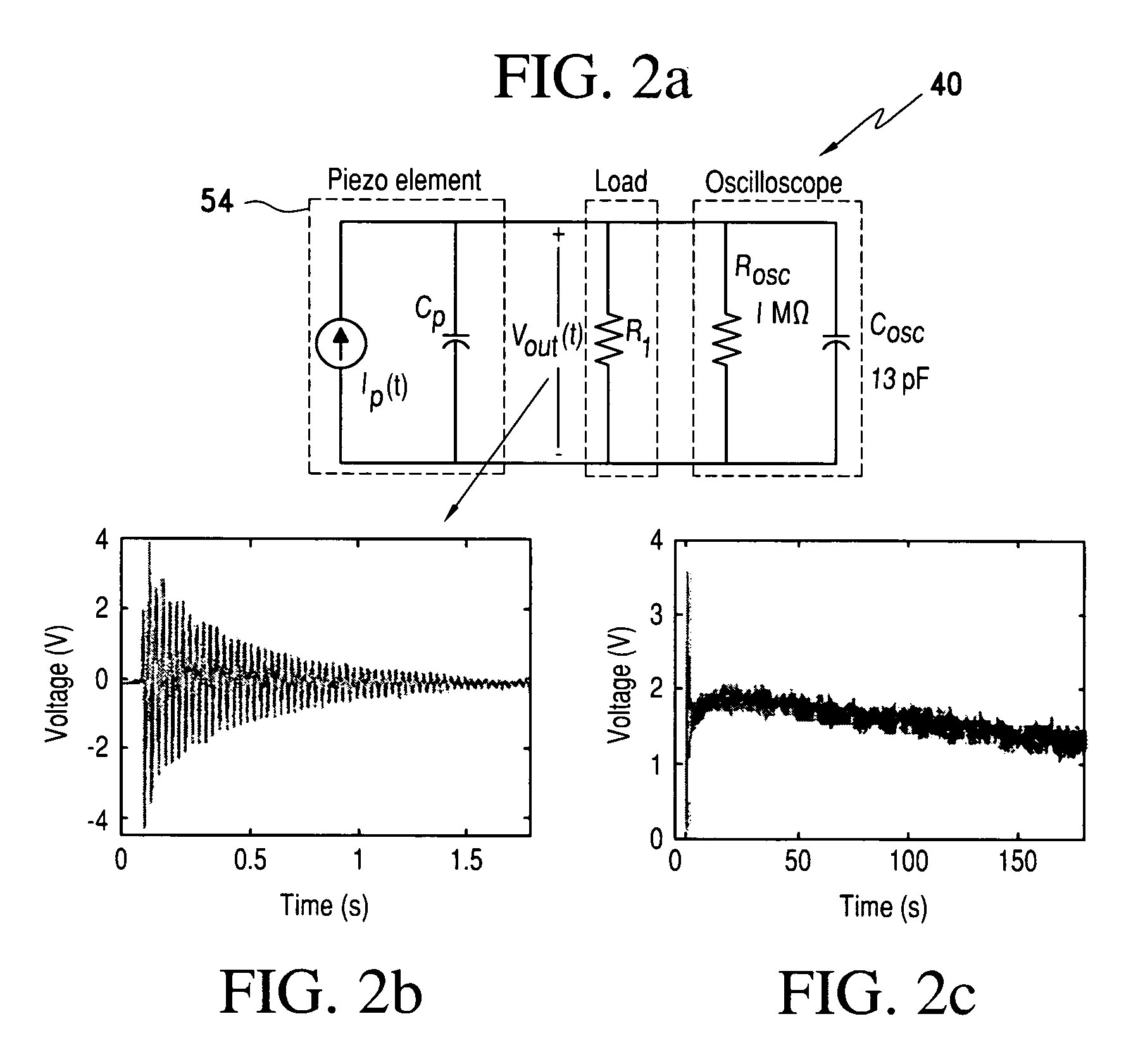High efficiency radio isotope energy converters using both charge and kinetic energy of emitted particles
a radio isotope and converter technology, applied in the direction of generators/motors, nuclear engineering problems, nuclear engineering, etc., can solve the problems of limiting the extent to which the overall device size can be shrunk, conventional batteries have a relatively short useful life, and the use efficiency of autonomous microsystems is hindered, so as to improve the efficiency of the radioactive powered mechanical reciprocating beam
- Summary
- Abstract
- Description
- Claims
- Application Information
AI Technical Summary
Benefits of technology
Problems solved by technology
Method used
Image
Examples
Embodiment Construction
[0037] Referring again to U.S. Pat. No. 6,479,920 FIG. 1a, for nomenclature, a collector 50 collects the electrons emitted by the structure 57 containing the radioactive thin film. As the electrons are emitted, a voltage builds up between collector 50 and 57 which electrostatically deforms the top cantilever. Eventually the plates touch each other and the vibration of the cantilever leads to power generation by the piezoelectric assembly 54-55. The reciprocation time of the cantilever assembly is a function of the charging current, the leakage current, and the mechanical properties such as the spring constant of the composite cantilever and the initial gap. The energy carried by particles emitted by radioactive decay in a radioisotope is captured and converted to mechanical potential energy that is stored in the elastically deformable element or cantilever 43. The release of the energy stored in the deformable element can be utilized to activate other mechanical parts directly or ca...
PUM
 Login to View More
Login to View More Abstract
Description
Claims
Application Information
 Login to View More
Login to View More - R&D
- Intellectual Property
- Life Sciences
- Materials
- Tech Scout
- Unparalleled Data Quality
- Higher Quality Content
- 60% Fewer Hallucinations
Browse by: Latest US Patents, China's latest patents, Technical Efficacy Thesaurus, Application Domain, Technology Topic, Popular Technical Reports.
© 2025 PatSnap. All rights reserved.Legal|Privacy policy|Modern Slavery Act Transparency Statement|Sitemap|About US| Contact US: help@patsnap.com



